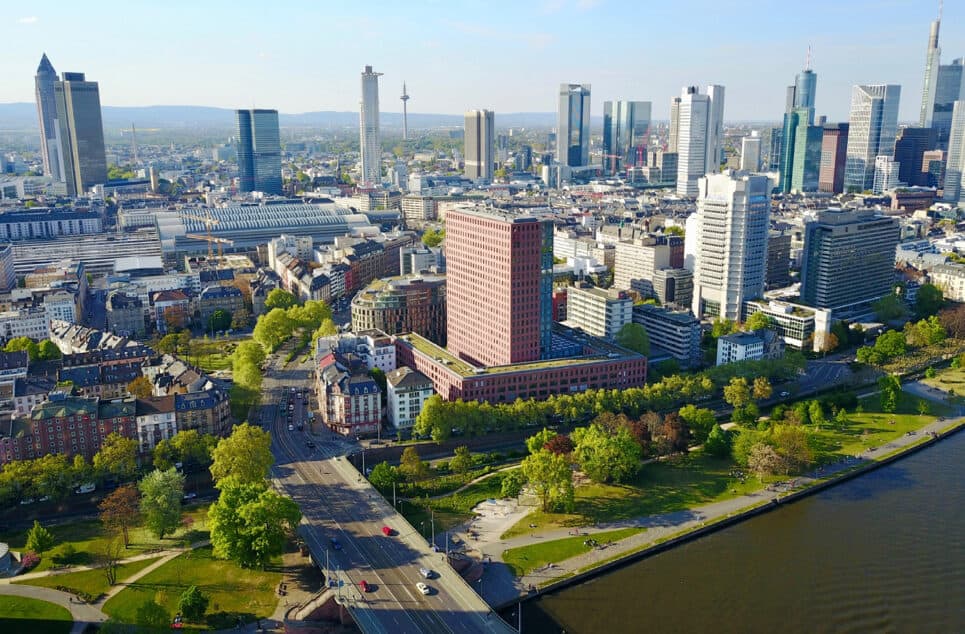
Productive cities, the cities of tomorrow?
Industries that have become miniature and virtuous are taking up residence in metropolises, buildings that are teeming with activity, offices that can become productive, shared logistical spaces, artisans, designers, delivery people, service employees who live near their place of work, urban areas that are coming back to life, etc. The productive city is being invented.
Did you know? From the 19th to the mid-20th century, Paris was the world capital of industry, with a great manufacturing tradition. Today, there is hardly any trace of this past. In addition to graphic design and printing, the capital’s current production is that of the luxury industry: ready-to-wear, leather, fashion, jewellery, decoration, etc. A craft industry that has survived because it wanted to preserve the “made in Paris”. Otherwise, as in many other large cities, including those in France, industry has left the city. Firstly, due to pollution and regulations concerning industrial risks. Secondly, because town planning, aided by the “tertiarisation” of the economy, has separated housing, offices, industry, etc. And also because the evolution of the price of urban land tends to push factories outwards… Not to mention relocations.
A break in the current vision of development
Today, dense urban fabrics are mainly devoted to housing, office work and the consumption of products from elsewhere. Although it still exists, including in certain urban areas such as Le Havre or Rouen, industry generally seems forgotten and invisible. Moreover, the term “post-industrial” society is often used.
Nevertheless, digital technology and its fablabs, as well as the “think global, act local and produce local” have emerged. Business services, supply logistics, construction and public works, craftwork, manufacturing, digital industries, energy transition, recycling, the circular economy, short food circuits, “clean” industries of the future, etc. The idea that the “productive city” should be able to create jobs in a variety of sectors is gaining ground, including among local elected officials and town planning professionals. And even if it represents a break with the current vision of development.
So much so that research is multiplying on a more general way of rethinking the place of work in the city: “How can we design a city that creates the right conditions for hosting the permanent evolution of work? How can we maintain qualifications at all levels in the city? How can we encourage the maintenance or even the return of industry to the built-up urban fabric and how can it be incorporated into the landscape, the city and architecture? How can we implement more sustainable urban logistics? How can we promote proximity between places of production and places of consumption of goods in the perspective of the ecological transition?”
More mixed, more sustainable, more resilient metropolises
Initiated in France by the interministerial Town Planning, Construction and Architecture Programme department (Plan Urbanisme Construction Architecture or PUCA in French), this research is all the more topical in that it raises acute social, environmental and strategic issues. In effect, researchers have observed that the centrifugal effect of the dynamics of land prices in large, dynamic cities drives out both production activities and people who cannot or can no longer afford to live there, with undesirable social effects. The idea would therefore be to encourage the return of these production activities to the city and at the same time to enable the players involved in them to live there, thus creating more mixed, more inclusive metropolises.
This type of dynamic would also have environmental virtues by enabling a reduction in greenhouse gas emissions: reduction of commuting, reduction of “imported” emissions by producing locally, i.e. emissions from imported products. This aspect is all the more important as all metropolises or agglomeration communities are already committed or will have to commit to climate-air-energy plans, a local version of France’s national low-carbon strategy, aiming for “carbon neutrality” by 2050.
From the shortage of masks in 2020 to the price of many raw materials today and the risk of global famine, the crises of the pandemic and the war in Ukraine are a sudden reminder of the strategic issues of sovereignty and resilience related to the maintenance and even the strengthening of productive activities in France: food, health, renewable energy, transition technologies, etc.
So when will we see a global plan that includes all cities, both the most dynamic and those that are “in decline”?
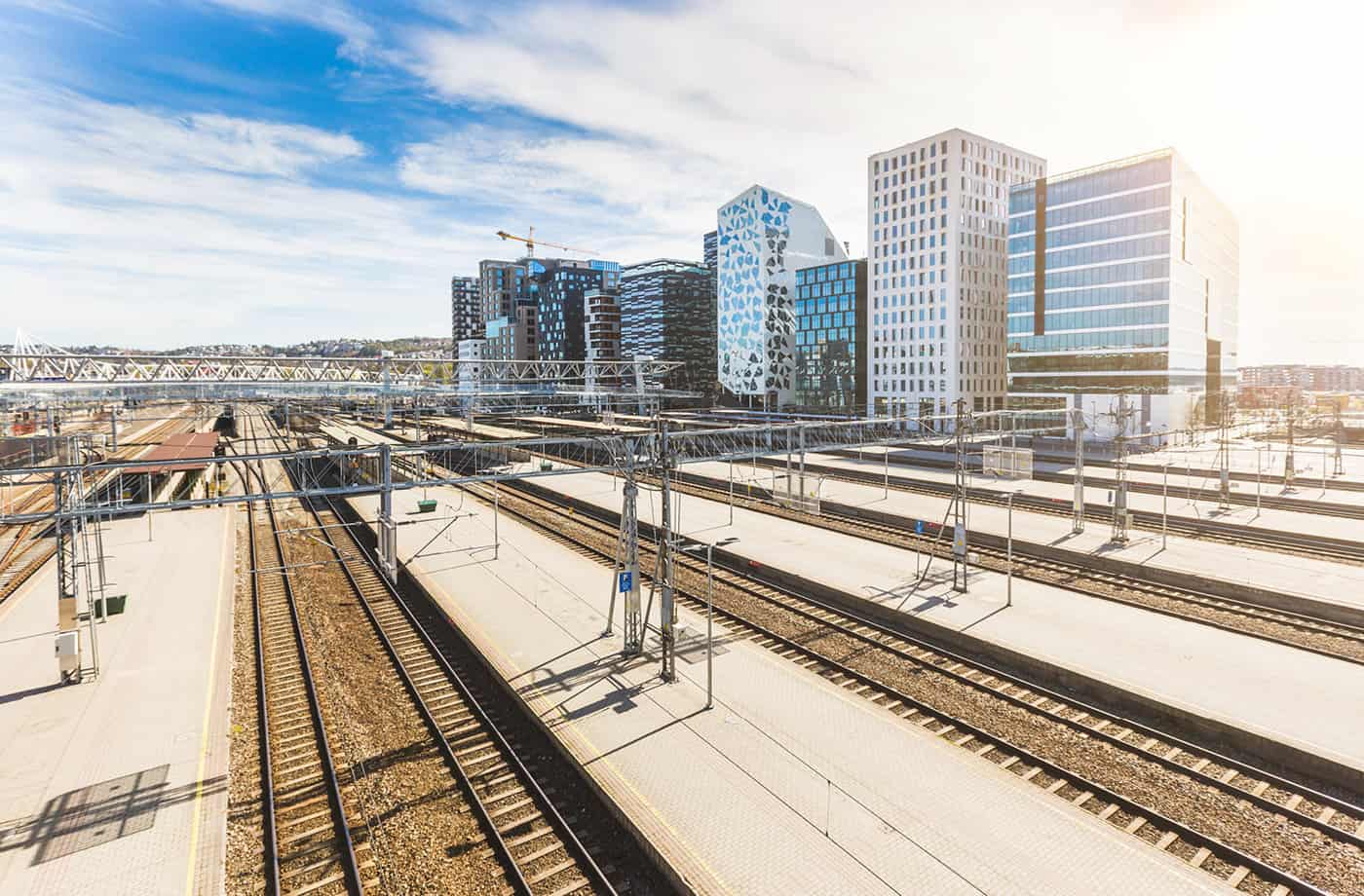
New software for urban development
Intervention of public authorities on the issue of land, the creation of innovative structures and financial tools, a change of image for the industry, cooperation between metropolises, the implementation of global strategies in line with the ecological transition, etc. These are the levers for building the productive city of tomorrow.
“Productive city, inclusive city, the struggle remains the same!” The sociologist Pierre Veltz, a specialist in territorial dynamics, sums up here one of the major challenges of a return of manufacturing production to the heart of metropolises: to fight against the “polarising dynamics of the “service industry””, which concentrates the most affluent in the largest cities and excludes “poorly paid intermediate jobs” because of competition for land and the cost of housing, thus destabilising society.
To counter this phenomenon and its de-industrialisation, Brussels has been developing a strategy for years to diffuse industry in the urban fabric through “institutional innovation”: Citydev, a body which is both a public planner and an economic development agency. Its shareholders are the Brussels region and the 19 municipalities that make it up. This structure makes it possible to control land and to design its projects in such a way as to keep the middle and working classes in the centre of the city, “by offering them affordable housing and by promoting an adequate supply of jobs,” explains Hugo d’Assenza-David, a researcher. For example, “greenfield sites are subject to long term leases, while developed sites offer infrastructure and premises available for rent”.
Land, a central and sensitive issue
The result: “Progressive reclaiming of neighbourhoods, of areas of the city that have regained their functional mix. These encouraging results are the fruit of collective work and convergent strategies.” And they are inspiring. Hugo d’Assenza-David produced a monograph on the Belgian capital for the Plan Urbanisme Construction Architecture (PUCA), a French interministerial structure that has developed a research programme in France to encourage the return of productivity to the city, the results of which are to be published this year.
The question of land and public intervention to regulate it appears to be all the more central in that cities must now ensure their development with the constraint of no longer expanding onto land that is still natural, unless they renaturalize other land. This is the rationale of “zero net artificialisation”, which is now imposed in land use planning, and which limits the available surface areas. “The question of land will become extremely sensitive,” warns Hélène Peskine, permanent secretary of PUCA. “In cities where there is a lot of wasteland, we will be able to work on recycling it to some extent. However, in cities with little wasteland, competition will be tough, especially in metropolises. Without regulation by the public authorities, either in town planning documents prohibiting other uses, or with actions regarding land ownership, or with subsidised financing, it will not be possible to maintain and develop productive activities on land that is too coveted.
Productive city, ecological transition: a global strategy
Beyond the framework of zero net artificialisation, regional policies will generally have to integrate all the other imperatives of the ecological transition into their development: climate, air and energy plans, carbon neutrality, etc. The Lyon metropolis is developing this objective of a “manufacturing metropolis” that can reconcile the development of tomorrow’s productive activities, environmental preservation and the quality of the urban living environment. And it shows a global strategy. This strategy is based on four axes: hosting, transforming, reconnecting, cooperating. And various innovative tools.
An eco-industry land package
Behind the term “hosting” lies the issue of land and zero net artificialisation. “It is a question of knowing how to give ourselves the means to regenerate industrial areas, and possibly to re-orient commercial areas towards productive activities, but also how to preserve the possibility of maintaining and even re-establishing productive activities in the heart of neighbourhoods, the heart of cities and the heart of villages,” says Emeline Baume, vice-president of the Lyon Metropolis. The solution is to mobilise public money. “For the first time, we have an eco-industry land package worth 48 million euros”. In order to be able to “acquire land that is currently productive and would otherwise be sold to operators who would no longer be productive”. Financial envelope also for the regeneration of industrial areas and the conversion of commercial areas. And a tool to maintain and reposition productive activities in the heart of neighbourhoods, the heart of municipalities and the heart of cities: the semi-public company (SEM) Patrimoniale du Grand-Lyon “which enables us, for example, to buy premises and install activities on them, with progressive rents”.
Invitations to tender and seed funds
The Metropolis of Lyon’s desire to “transform” industry addresses the issue of carbon impact, in order to help production processes to “consume less energy and water, have little or no impact in terms of pollution and disturbances, and produce little waste”, and to adapt to the necessary changes. Various tools will be used to achieve this: permanent invitations to tender “to support investment by companies in energy sobriety and efficiency, and in goods logistics”; a seed fund to help young companies “with solutions” to get through the pre-industrial stage.
Changing the image of industry and “making” professions
The desire to “reconnect” with industrial reality has the ambition, through a specifically created Foundation, to change the negative, if not distant, image that productive activities often inspire. It is therefore a question of knowing “how to talk to prescribers, i.e. the educational community, parents and young people, about “doing” jobs, productive jobs, which have meaning and which are useful. Because in fact everyone is in favour of saving the climate, but few people still want to repair, reposition, remanufacture, and think about our everyday objects with less material, less energy, less water, and to extend their lifespan,” explains Emeline Baume.
Cooperation between metropolises: a development tool
Finally, following the example of Lille-Brussels, the Lyon Metropolis has made cooperation a real tool to encourage the maintenance and development of production in cities. In this context, it has developed two tools with the Saint-Etienne Métropolis: its seed fund for young innovative companies and its “industrial reconnection” foundation. “The issue is no longer about stealing companies; it is rather about stealing jobs. The issue is to find the best place, the best “ecosystem” possible, when a company in our region grows and needs land or real estate, or when a company from outside the region wants to come for one reason or another”.
For Emeline Baume, cooperation is also necessary within economic activity sectors, “bearing in mind that the priority sectors in our region are construction, food, mobility, energy and textiles. For example, textiles have a history, a heritage. We also have many socio-economic players who are either in the luxury or technical textile sectors. The cooperation should enable government to amplified and to reach all the bricks of the textile sector”.
All in all, a whole new software.
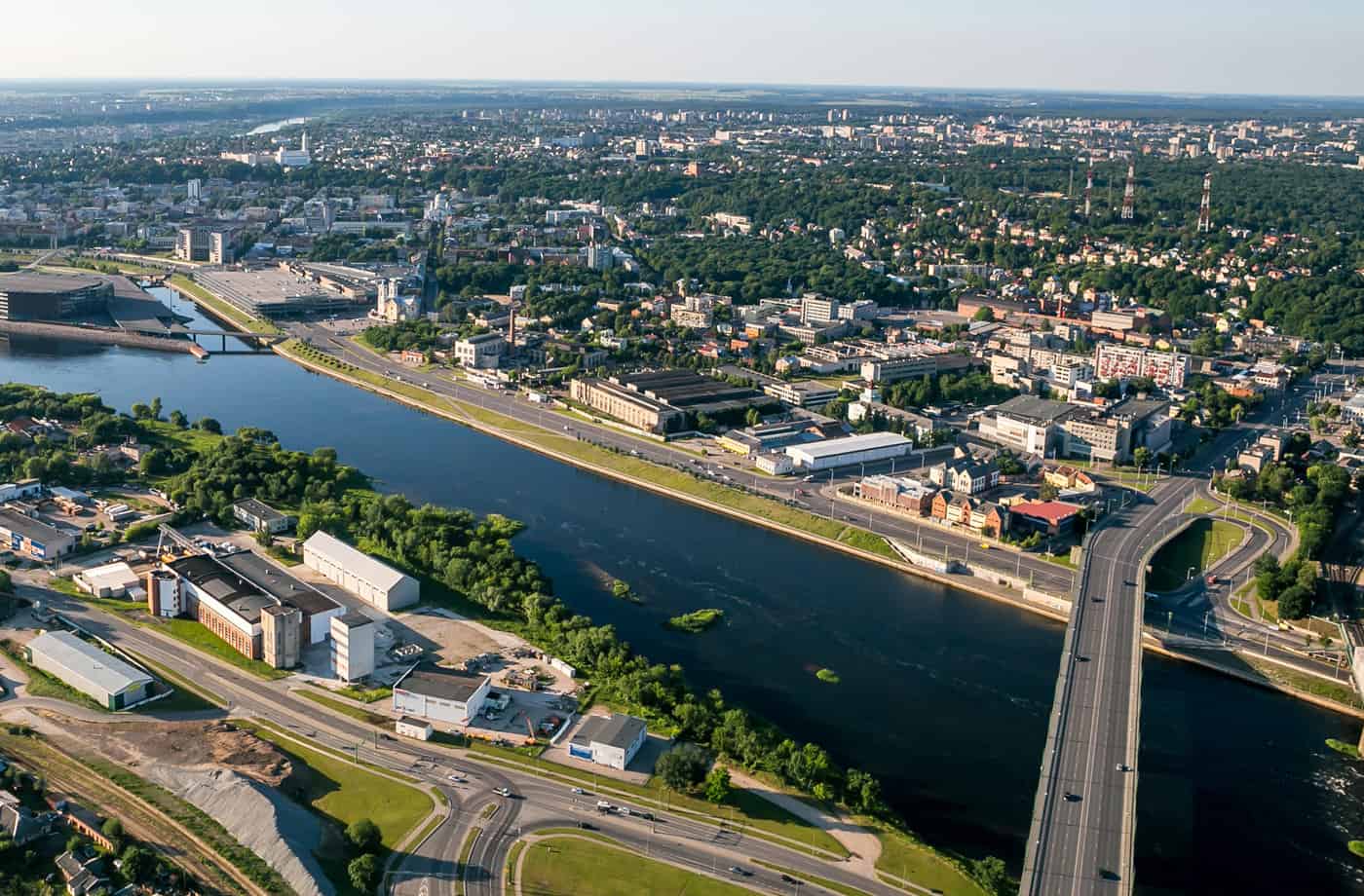
Dynamic regions, regions in decline: two different paths
While urban agriculture, fablabs and other makerspaces seem to be paving the way for a return of productive activities to the city, true reindustrialisation presupposes the densification of already dynamic metropolises, with productive hotels, and the regeneration of under-occupied urban surfaces in cities in decline.
Will productive activities make a comeback in urban centres?
The development of a “neo-craft” centred around digital technology is showing signs of a revival, with fablabs, hackerspaces, makerspaces and other third places open to the public, generally on abandoned urban land: industrial wasteland, various unoccupied premises, etc. Whatever their various specificities (manufacture of goods using 3D printers, crafts, arts, training, business creation, involvement in the ecological transition, etc.), these spaces, run by generally young people, claim to have the same culture: that of “making” and learning, with values based on sharing and cooperation, and often taking into account environmental issues.
“General interest” third places
They are now being set up in all territories, mainly in urban areas. Assessed in 2018 at 380 by the website and specialised magazine Makery, they even make France one of the world leaders alongside Italy. They are structured with the French network of fablabs and the national association of third places. They are supported by the National Agency for Territorial Cohesion (ANCT signifying “Agence nationale de la Cohésion des territoires”). Some of them have been labelled “Fabriques de territoire” (regional factories) or “manufactures de proximité” (proximity factories), and a public interest grouping (PIG), showing their “general interest” character, is in the process of being set up with the Ministries of Territorial Cohesion, Labour, VSEs, Research, etc.
For its part, the need to recreate short circuits is currently finding applications primarily in the field of food. Urban agriculture spaces, enabling the production and distribution of fruits, vegetables, flowers and various plants on site, and possibly the creation of artisanal activities (beekeeping, micro-brewing, dyeing, etc.), have multiplied in recent years, particularly on rooftops (hospitals, schools, etc.), as in Paris, where the City also supports the creation of educational farms: Parc Kellermann (13th arrondissement), Jardin Suzanne Lenglen (15th arrondissement), Square Binet (18th arrondissement), etc.
What future for offices around high-speed train stations?
In addition, the successive confinements due to the health crisis have changed many working and even living habits. “We are seeing the emergence of somewhat hybrid places, houses in the suburbs that are also becoming workplaces, and also work spaces in residential areas, particularly in the middle and outer suburbs. Rather than taking the train to Paris or Bordeaux, people are going to work in their neighbourhoods, next to the bakery or the school,” says Hélène Peskine, permanent secretary of the Urban Planning, Construction and Architecture Programme (Plan Urbanisme Construction Architecture or PUCA). This may be a precursor to new business models to encourage the establishment of shared workplaces in the suburbs. And this also raises the question of what will happen to the many square metres of office space thus “freed up”, for example around high-speed train stations. Will they be used for productive purposes?
The question is valid. In effect, factories still exist and others are being created, including in certain urban areas. Although they employ fewer people (productivity, robotisation), they have in fact become, according to researchers, inseparable from networked activities: maintenance of technical systems, links with customers, etc. Services, physical production and digital production are thus blending together, erasing the boundary between industry and the service sector. Thus, some speak of “network industry” or “hyper-industrial” society, as does the sociologist and engineer Pierre Veltz. A concept that directly confronts the concept of “post-industrial” society.
Temporary logistics equipment
For example, the development of e-commerce for manufactured goods, therefore from the industrial world, has greatly increased the tasks related to logistics and therefore delivery activities, but with warehouses often far from urban centres. Metropolises are therefore looking to find new spaces for so-called “last mile” logistics. Pooling infrastructures such as unloading docks is one option. Possibly foreshadowing the future, the real estate group Sogaris has explored the concept of a “Traveller’s Pavilion”, a building that can be dismantled and deployed on temporarily available sites. Designed by the Syvil architecture and urban planning studio, it has resulted in the P4 – Paris Pantin Le Près-Saint-Gervais hub, a sort of micro-Rungis of 800 m2 with ecological overtones, installed under the ring road at Porte de Pantin.
Productive hotels facilitated by the “miniaturisation” of the industry
The architecture and urban planning studio Syvil is also developing the concept of productive hotels, based on the existing model of industrial hotels. In the 1980s, wishing to combat its deindustrialisation, the City of Paris, in particular, began to build industrial hotels, multifunctional buildings housing various users on several levels. There are currently about forty of them for 600 companies and the Parisian Urban Planning Workshop (APUR) hopes there will be around fifty by 2025, for example, the future Chanel workshops (19th arrondissement), the Serpollet building (20th arrondissement), and the Berlier building (13th arrondissement) undergoing renovation.
Geneva has also embarked on the adventure, noting that this densification of productive activity is facilitated by the “miniaturisation” and “tertiarisation” of industry. This is undoubtedly an asset for the future of dynamic cities. Especially since in France such densification is made mandatory by the concept of “Zero Net Artificialisation”, leading decision-makers to build the city on the city.
Hybrid offices and productive spaces
Developing a holistic approach, Syvil architectures believes that these new productive hotels “must be able to accommodate spaces for prototyping and to enable the manufacture of first series before launching production on an industrial scale”. And to ask the question of hybridisation between tertiary and productive real estate, with “spaces capable of being both offices and production spaces, or of being one in order to become the other”.
Turning unused artificial areas into a resource
Faced with dynamic metropolises, the question of relocating productive activities in urban areas is posed quite differently in small and medium-sized towns, which are currently in decline, but where under-occupied urban land and vacant housing can be “a potential for the future”, says Hélène Peskine. “At a time when we are talking about ecological planning, we could imagine a national strategy to mobilise the relocation of industries here”, with of course the necessary conditions, training for example. Or when unused artificialised areas would become a resource, just like natural soils for carbon, biodiversity, etc.
This reconstruction of the city on top of the city can also be achieved with the industries already present. This is the case in Dunkirk, where Arcelor Mittal, receiving state subsidies for new processes to capture CO2, has developed a project factory to transform its industry into a more digitalised, more robotised industry. It relies on its employees to create local start-ups on new ways of working. For PUCA, “this public-private partnership shows that there is already a regional dynamic on these strategic developments”.
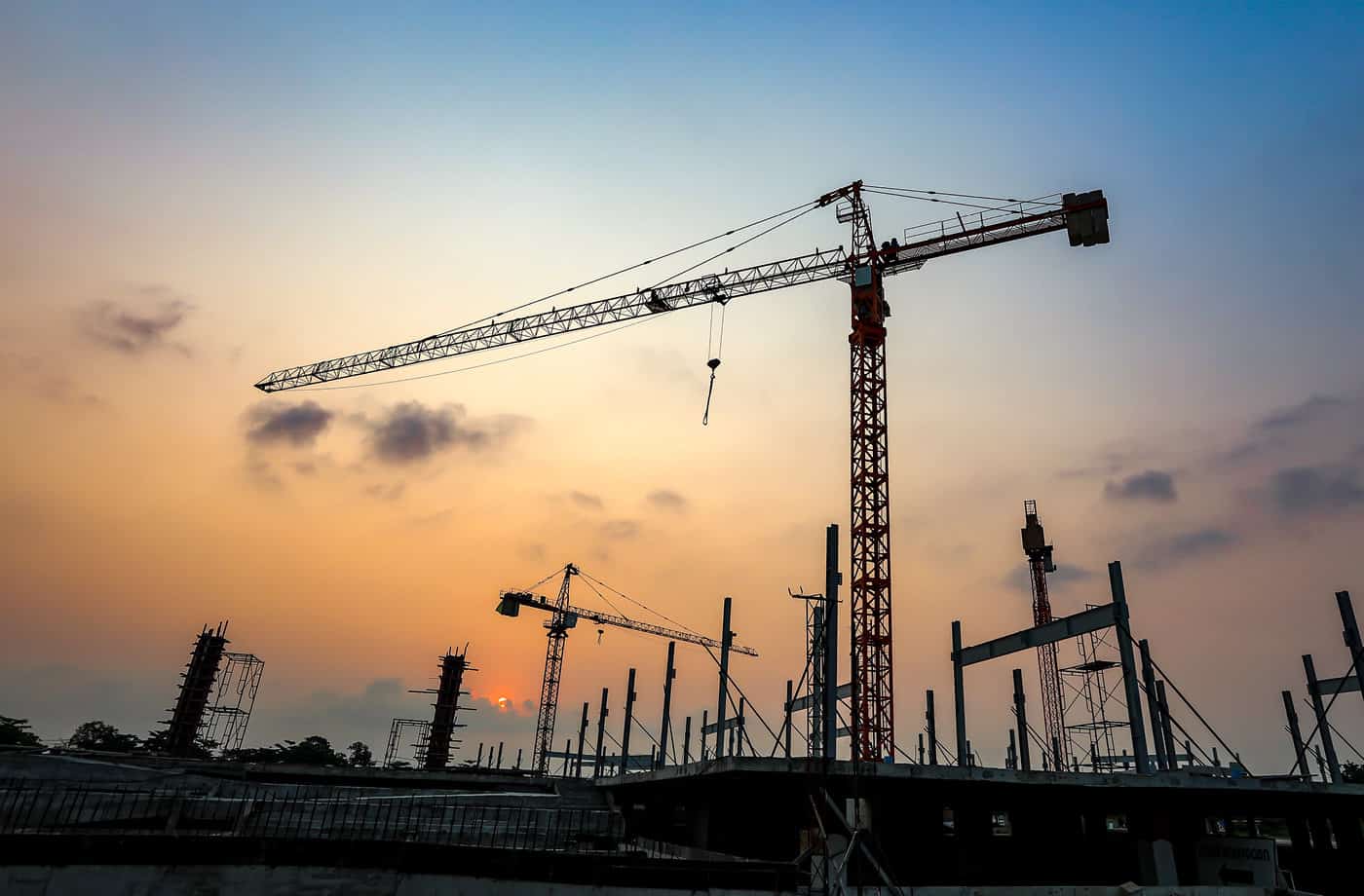
The productive city, a research topic in the Urban Planning, Construction and Architecture Programme
The centrifugal effect of land prices, maintaining production in the city, the re-qualification of business parks, bringing together production – consumption and resources – manufacturing, etc. This year, the Urban Planning, Construction and Architecture Programme (Plan Urbanisme Construction Architecture or PUCA) will unveil the results of its research programme on the productive city.
Interview with Hélène Peskine, permanent secretary of the interministerial Urban Planning, Construction and Architecture Programme
Hélène Peskine, permanent secretary of the interministerial Urban Planning, Construction and Architecture Programme (©ijeab)
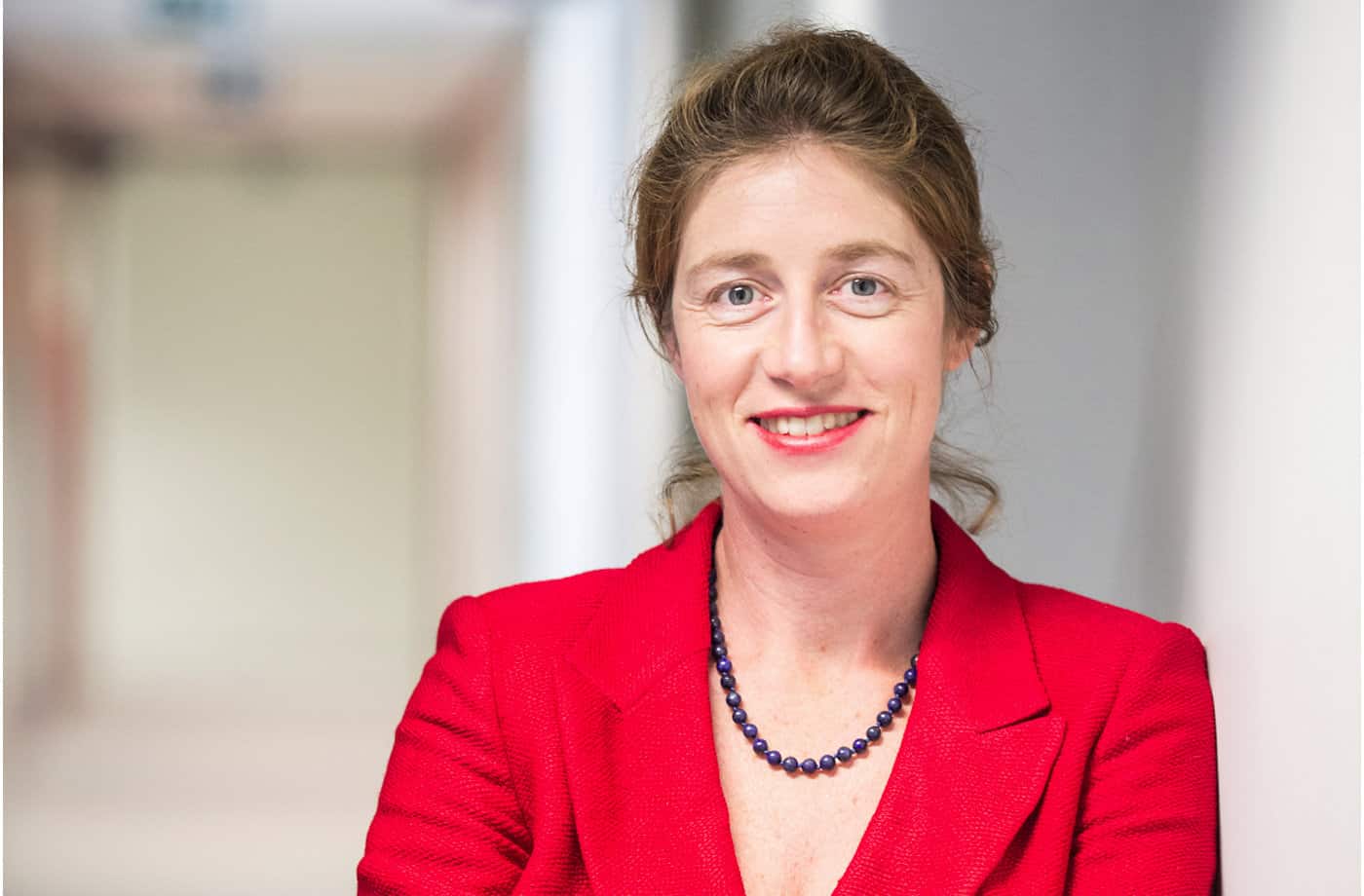
The Urban Planning, Construction and Architecture Programme is an interministerial body set up in 1998 to advance knowledge on local areas and cities in order to inform public action. How does it work? How does it choose its fields of investigation?
We have a steering committee made up of public and private partners (in particular, major construction companies, ADEME, ANAH, associations of local authorities and the order of architects, a scientific college) because our vocation is to develop programme of scientific interest, with researchers in human and social sciences and urban planning, and a State college where various ministerial departments, who are major funders, are found: regional planning, energy, architecture, etc. Once a year they are brought together to orientate the various works, and we also meet regularly in bilateral meetings. We have a five-year programme, a bit like an urban planning agency, which means that this is long-term work, requiring research, surveys, etc. The PUCA can also be called upon by players in the urban world. In general, a topic emerges as a research issue because several organisations have told us that they have questions about it, for example to find a solution to a challenge.
Following what reflections did PUCA come to initiate a research programme on the issue of the “productive city”?
The example of the productive city is very representative of our approach. This programme was initiated three years ago. It is the result of a working group that we faciliated for the Club Ville Aménagement, the public developer club. Their request: “Help us define the reality of work in the urban world today so that we can decide how, during development operations, we will be able to find premises”, apart from the current square metres of office space. Working from a socio-economic angle to try to see how employment had evolved, particularly so-called popular, medium or low-skilled employment, the PUCA identified that in 40 years there had been a significant increase in job insecurity, linked in particular to common services such as delivery. And we also characterised production employment in cities and its development. This led to the idea that we needed to look more deeply into these questions relating to the capacity of cities to host production sites. At the same time, many projects were emerging around co-working spaces, third places, fab labs, makerspaces, etc. Fad or structuring model? The question is valid. And although there was not yet much talk of industrial relocation, there was nevertheless talk of short circuits, the transformation of resources, and regional strategies around the agro-food industry and construction materials, etc. This is how the research programme for the productive city was born, with the Club des Aménageurs. Little by little, real estate developers, logistics experts, researchers specialising in these issues, ADEME, etc. were added at their request. The result was the creation of a steering committee that brings together players and researchers, followed by a programme and a call for proposals, etc.
Your call for research proposals was launched in 2020 and is about to start yielding results. What are the main lines of work?
The specifications of the research programme on the productive city were established around five areas resulting from our various stages of reflection, and validated by our partners who are also co-funders: the Fabrique de l’industrie, the Caisse des Dépôts, etc. These areas are as follows: the maintenance and return of productive activity in the city; workplaces at a distance from the company; the productive city as an environmental development project; urban logistics and the evolution of commercial practices; the city of workers. We added this last area because we realised that reflection on the city often focuses on housing or habitat, because there are public policies behind it, but very little on workers.
The idea is that between 18 months and 3 years, depending on the research selected, we should have real results on the different questions asked, bearing in mind that a research programme is not a study. A specific result is not necessarily expected. It can also be a different way of asking questions, or it can lead to new questions. Following the invitation to tender, we selected the research projects for the programme with a jury made up of members of the steering committee.
So you studied more than 20 research projects, around ten of which have been selected… With which angles?
We have selected exactly 8, plus one concerning Lyon, but which has special funding. There is some fairly social research, such as the project concerning the geography of working-class jobs. Its issue: where are low-skilled jobs in cities and what are they? There is also research on public policies, for example on the role of communities in maintaining productive activities. Others focus more on economic research, such as the Cerema study on the centrifugal effect of land and property prices in large cities, which causes activities to disappear or move away. So the question that arises from this is how we can try to retain them. The last family of research is rather spatial, as in the Rhône-Alpes region, to find out how existing business parks are transformed, and which tools, including urban planning, make it possible to keep production activities. There is also more specific research on the luxury industry or on the effect of e-commerce on parcel delivery areas.
In parallel, in addition to study days on specific issues, a cycle of webinars was created to show the progress of reflection and to link the different research teams working on the programme. This enables collective work, with different input. The overall idea is to be able to gain insights into how people who produce the city or manage it can create productive jobs in it.
The first two reports, on the luxury goods industry and parcel delivery services in Avignon, will be published by this summer, and the others at the end of 2022 or the beginning of 2023.
What examples of operational objectives can be given from this research?
Several examples. The Gustave Eiffel University, which is working on the measures put in place by metropolises to maintain or bring back productive activities, is analysing Rennes and Bordeaux in a comparative manner, with a little European benchmarking. This team is working with the cities in question. In a way, this already creates local intelligence around this reflection. It identifies the levers put in place by these cities (mobility, land, etc.). The report will provide us with an insight into the various solutions, and our role will be to publicise it and disseminate it so that others can draw inspiration from it. We will carry out the same work in Lille and Brussels, where the work is more about supply chains. The idea here is to think about the possibility of bringing together production and consumption, as well as raw materials and manufacturing chains.
Another example is the luxury industry (haute couture, leather). We chose this theme because it is an industry that values the “made in France”, the “made in Paris”. These companies have long developed French or European supply chains and know-how based in workshops in Paris. The benefit is to determine to what extent, based on this example, we can develop similar strategies in other sectors. Especially at a time when major French firms, such as Decathlon, are seeking to relocate part of their production to France.
Research into parcel delivery points in Avignon will enable the city to optimise the location of urban logistics warehouses.
On other subjects, the PUCA is used to support local authorities in innovative approaches, for example within the framework of the Action Cœur de Ville programme designed to revitalise medium-sized town. This is the case of the “Pilot regions for land sobriety” project. What is that?
The idea is to help medium-sized cities to achieve the “zero net artificialisation” objective included in the Climate and Resilience Act. In these cities, ZNA is not possible without changing the business models of the projects and without supporting them. Unlike large cities, the real estate market is often not dynamic enough for the recycling of existing buildings to be profitable. In many cases, the model of urban development is the model of sprawling city entrances, housing estates, facilities around the historic city, etc. There are no operators or project models for the requalification of buildings, for building the city on top of the city. The rationale behind the Pilot Regions for Land Saving is therefore to say: How can we help a medium-sized town to enter into this urban recycling dynamic? Under what conditions? What does it need, in technical, engineering and financial terms, to define and make its operations profitable? For five years, we will support these cities in their efforts to carry out their development projects without using land. This also enables us to identify the levers and obstacles of ZNA. The following are among the areas already involved: Draguignan, Dreux, Epernay, Louviers, Maubeuge, Poitiers, Sète, etc.
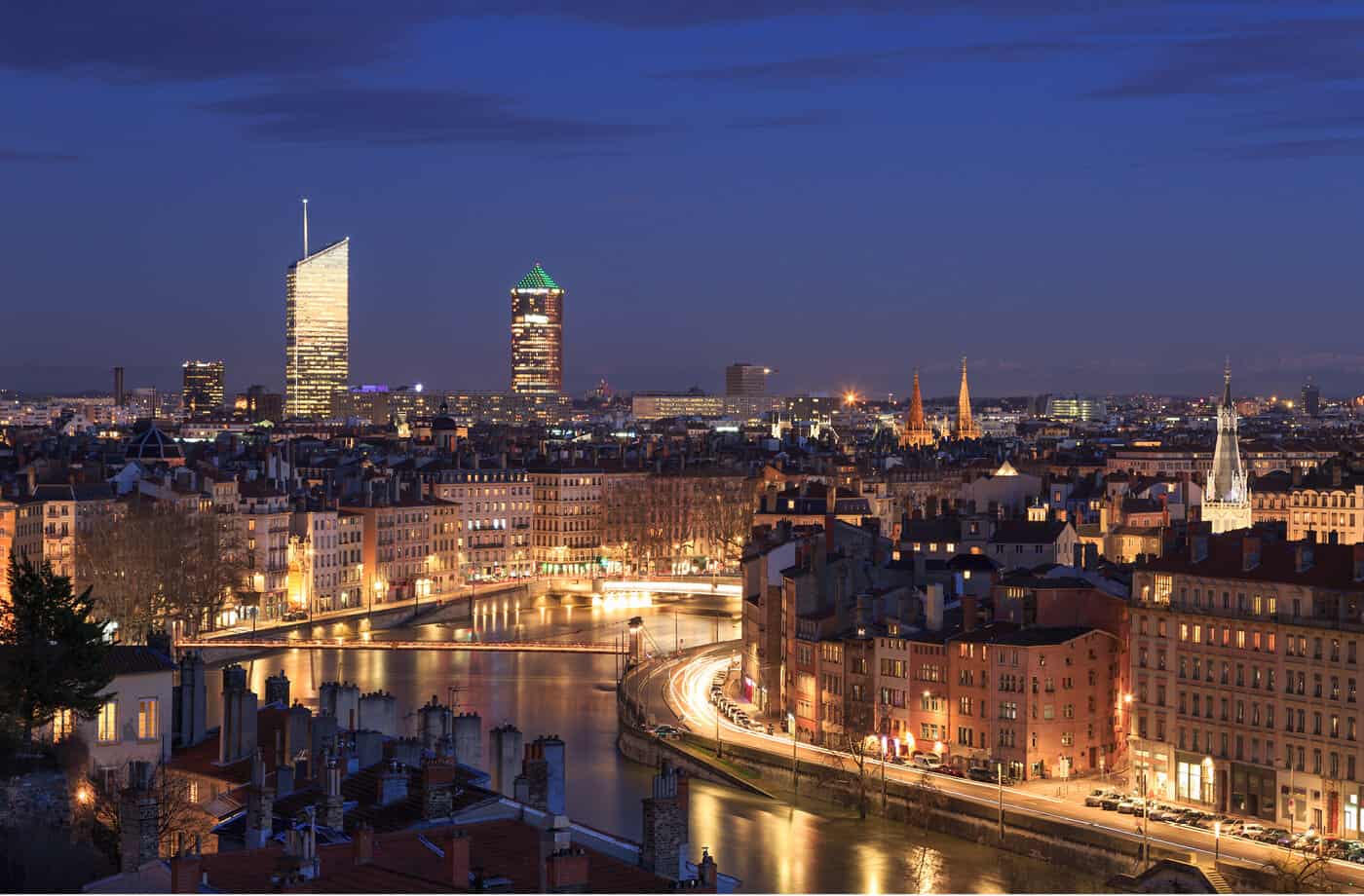
Lyon, a “manufacturing metropolis”
USIN project, industrial hive, cooperation with Saint-Etienne, industrial seed fund with social and environmental impact, promotion of productive business lines, etc. Having succeeded Gérard Colomb’s team at the head of the Lyon Metropolis, the ecologists are reinforcing the desire to maintain and develop industry in the city. With a distinctly green touch.
Interview with Emeline Baume, Vice-President of the Lyon Metropolis.
Emeline Baume, Vice-President of the Lyon Metropolis (©vwalakte)
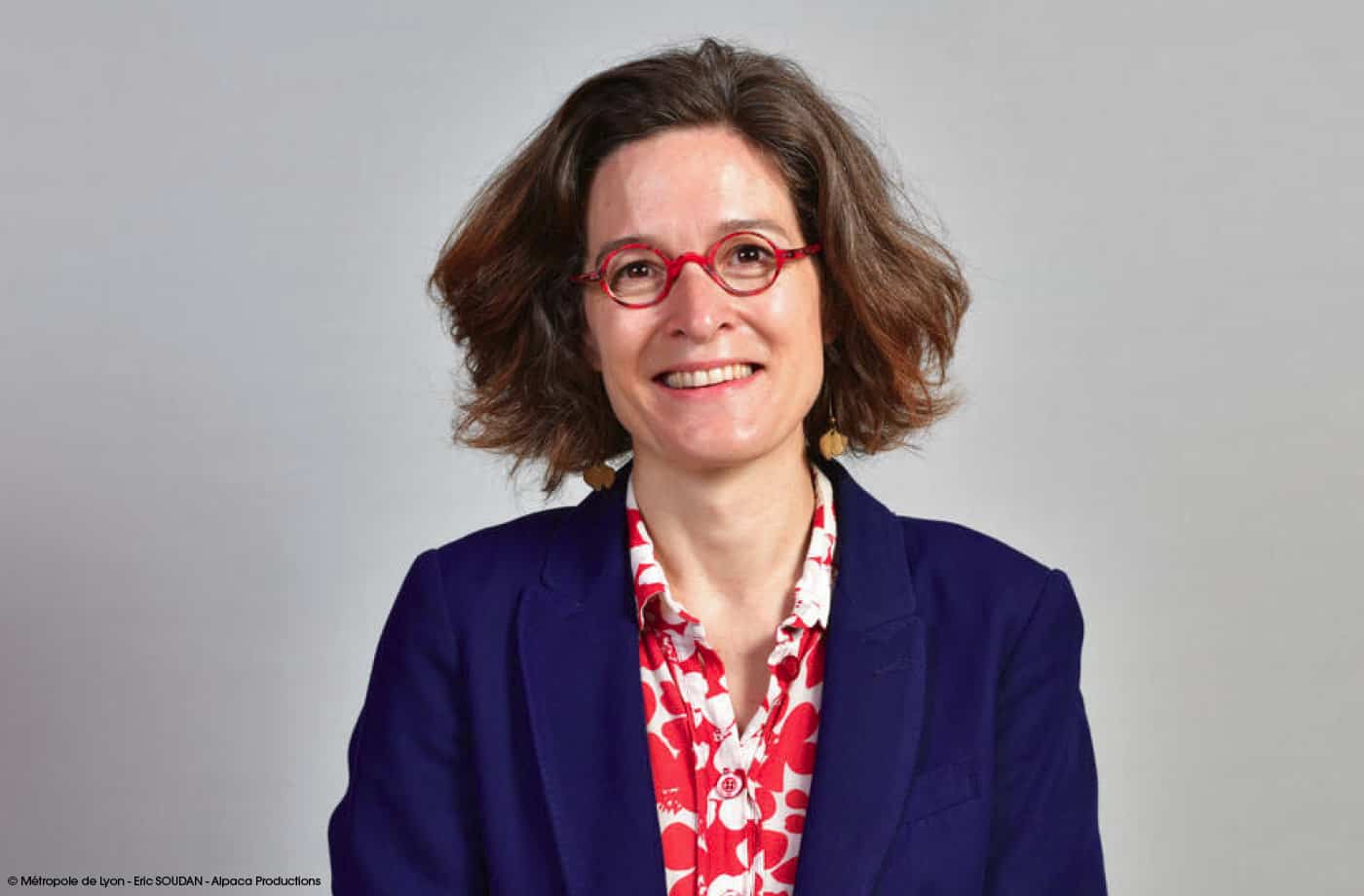
In its public policy for productive business, the Lyon Metropolis emphasises cooperation with other cities rather than competition. Why is this?
There are at least two reasons for this when we leave intellectual bias aside. The first is Zero Net Artificialisation imposed by the Climate and Resilience Act. This limits available land and we therefore have to think collectively about the objectives that make up the city. In other words, where do we put commerce? Where do we put public health services, which are also often in peripheral areas? Where do we put logistics activities? They will be installed on land that has already been waterproofed and urbanised, so as to preserve agricultural and natural land. Since the surface area for each of these is necessarily limited, we will have to discuss this. We are therefore going to talk about it with Saint-Etienne, Tarare, Vienne, Bourgoin, the Ain plain, and so on. This appears to make a lot of sense.
The second reason is the question of recruitment. Every region has difficulties because companies can no longer recruit. By working together to mediate (by talking more and more efficiently to teachers, trainers, families, young people, people in the process of integration), to rotate training offers, and to talk to companies, especially VSEs, SMEs and SMIs, recruitment will be easier.
While believing that the re-industrialisation of your metropolis is inseparable from the ecological transition, you have increased the number of support measures for industrial companies so that they can set up, maintain and transform themselves, etc. Among them, an “industrial seed fund with social and environmental impact”. How does this work?
This seed fund is aimed at young industrial companies that provide solutions, in other words, with virtuous processes to produce in an ultra-virtuous way. We are working to support this fund with the Saint-Etienne Metropolis, in collaboration with the Banque des Territoires, and are mobilising public money for this (17 million to date for the Lyon Metropolis, 5 million for the Saint-Etienne Metropolis). It is put into a common pot with contributions from subscribers, in this case industrialists and banks, such as the Caisse d’Epargne, the Caisse des Dépôts, Groupama, etc. The money is managed by a management company, Demeter. This is a source of innovative start-ups in the broadest sense of the term. That is to say, not only technical innovation, but also organisational and social innovation. These companies are chosen at the rather complicated time which follows the prototyping of the concept or object, after the research and development phase but before industrialisation. They then need to launch small series and to enter a market, and therefore funds. In order to be selected, they go through a basket of impact measures (social, carbon, employment, operation, etc.). Various bodies then decide whether or not to co-invest. The idea is to support about twenty companies by the end of the mandate, around 5 per year, with tickets ranging from 500,000 to 1 or 2 million over a very long period, 10 to 12 years. The first two companies will be announced shortly.
Located in a wasteland in Vénissieux, the USIN project also illustrates the desire of the Lyon Metropolis to maintain industry in the city. Which companies is it aimed at?
The USIN project is being developed on a former Bosch industrial site (now wasteland) that was rightly redeveloped during the last mandate. Bosch sold the site to a public player, the Serl group, thereby making it possible to have a productive business area. The project is strengthened, for example by buying up vacant square metres, and by financing programmes for SMEs and SMIs. What has changed since our arrival is that this involves not only high-tech production. We also have low-tech. The idea is to establish a business park serviced by public transport, metro and tram, and which is completely suited to this type of future production, from high-tech to low-tech. Therefore we will Symbio, which is hyper-technological in the hydrogen fuel cell field, and the Alchemists, who recycle bio-waste.
We will also have an entrepreneurial cluster. There are already three in the region, located in the west. Two more will be created in the east, including the USIN. These are places where young entrepreneurs who are starting up their businesses are supported, to help them get through the three-year stage, particularly with progressive rents.
The La Ruche Industrielle, an association that brings together institutions, universities and industrialists to help them support each other, is also part of the USIN project.
Yes. The aim of the association La Ruche industrielle, which already existed during the previous term of office and which the Metropole of Lyon finances as well as being a member, is to get productive players to work together. Industrialists work together on industrialist topics, in what are referred to as circles. Today, they carry this out with two schools, INSA and ECAM. At the beginning, la Ruche Industrielle was very technological and there were only major industrialists. We have strengthened it, as well as USIN. The topic of energy saving and efficiency as well as the issue of materials, for example, give rise to a study circle on the circular economy. Not the circular economy in zero waste mode, but rather to create productive processes, to carry out eco-design and remanufacturing, therefore the upgrading and reconditioning +++ of equipment, etc.
A second topic has been opened up on the attractiveness of professions, since manufacturers are finding it extremely difficult to find people with a 2-year degree in maintenance. We need to see how we understand these jobs, how we qualify them, how we quantify the need, how we develop the job descriptions, how we can better source, etc.
In your drive for transition, how do you see the future of a site such as Chemical Valley, where there are currently many heavy industries that emit large quantities of greenhouse gases?
We are in favour of maintaining and developing productive activities in our region and, in general, in the Rhône-Alpes region, in France and in Europe, because we are collectively convinced that it is better to have productive activities that are monitored, assessed and supervised with social and environmental regulations, rather than productive activities that are in regions, countries and continents which engage in social and environmental dumping. So there is no reason to say that the Chemical Valley is a problem for us. On the other hand, we have a responsibility to support industrialists within the limits of what we can do, since environmental policing remains the domain of the State. We therefore support them to guarantee a reduction in impacts. Air, water and soil quality, pooling of treatment resources, etc. We spend a lot of time working with industrialists in the Chemical Valley to ensure that they are exemplary in our region. We are in the business of +++ support rather than indignation and questioning. Even though we can face complicated situations.
Therefore, the industry often has difficulty recruiting. With Saint-Etienne Metropolis, you have also initiated an “Industrial Reconnection Foundation” to make industrial jobs more attractive. Is this the “employment” component of a productive metropolis, with the challenge of enabling everyone to live close to their workplace?
There is a bit of that. I want to enable everyone to work close to home and in an organisation that brings something to the region. In order for young people, men and women undergoing professional retraining or people on the path to integration to want to go into productive jobs, these jobs must be less polluting, less wasteful and have a more positive impact on the region. This is why we work so closely with manufacturers.
For the ILYSE Foundation (which stands for Industrie Lyon Saint-Etienne), the aim is to reposition the vision of productive activities in the collective unconscious.
With permanent calls for projects, this foundation finances actions carried out by associations. The first are aimed at 11-16 year olds. These are two-year projects, established between companies, generally small and medium-sized businesses, and secondary schools, so that secondary school students can discover and experience the know-how and professions in the productive sector. And like them.
